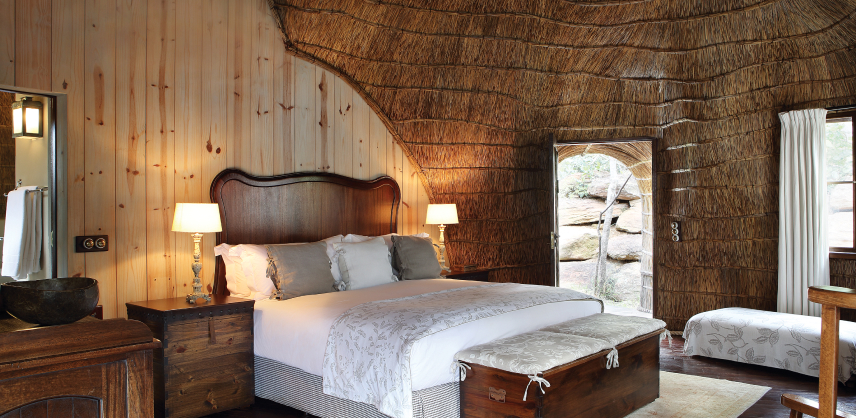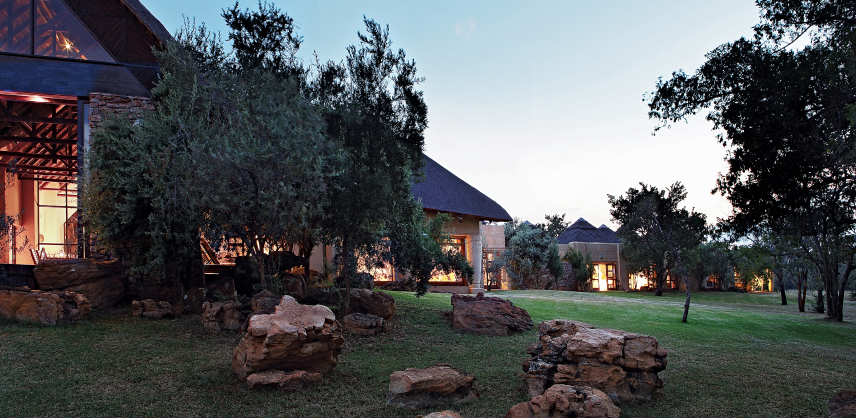Book directly with ease.
During the rainy season in the bush there is a lot of liveliness and activity going about. Whether it is the various species of frogs coming to life in the late afternoons and early evenings with their serene calls from various water sources across the reserve, or a flap-necked chameleon slowly climbing towards the tip of a branch for its resting place; there always tends to be more bustle from the animals at this time. A lot of juvenile antelope and zebras graze the fields trying to find their way around after recently coming into the world. The fresh morning air after an evening of rainfall makes the early morning wake-up call so much more worth it. The bush also looks a lot more green & lush. Reptile activity increases based on weather and temperatures, and as the day heats up one can often find these cold blooded animals such as lizards, skinks and even water monitors basking on the rocks to welcome the warm sun. The roads on the reserve often have quite a bit of water run-off along the sides from good rainfall, and animals will easily make use of this influx of water by having drinks from the small puddles formed at dips in the road. One such animal is the rather intriguing Leopard Tortoise. These intriguing reptiles have beautiful shell markings; similar to that of the rosettes of a Leopard, and this is where its name is derived from. They mainly feed on plant materials, and are quite water dependant. They have a special adaptation on their bodies known as the Bursa sac, which is a storage unit they use to store water in dry times, especially during winter times. At those times one rarely sees a tortoise as they try and restrict their movement distances to conserve the water they have, and only use it when they absolutely have to. When attacked by a form of predator this Leopard tortoise will excrete, often depleting some of the water in the sac, as a defence mechanism to deter the predator. It is for this reason that it may not be a great idea to pick these little guys up for an extended duration, as they will then feel threatened and excrete their water supply in defence. As much as their movements are limited in winter times, these tortoises are a lot more active in the rainy season, as now there is an abundance of water all around and they can risk moving longer distances because even if the water storage in the bursa sac gets depleted they can quickly resupply themselves at a nearby puddle. As most people know these peculiar looking reptiles are not the fastest in the animal kingdom, and move slowly from one point to another as the shells on their backs, which act as a form of hard covering protection, can be quite heavy for them to carry around. When they move to different areas in the bush, they sometimes expose themselves when walking on the road trying to reach the puddle they are going to resupply from, making them very vulnerable, so in this motion they have to move rather quickly to avoid staying exposed for too long. The Leopard Tortoise is a member of the small 5, along with the Rhino Beetle, Ant Lion, Red-Billed Buffalo Weaver, and Elephant Shrew. During a morning Game Drive on Shambala we had the privilege to see one of these beautifully marked reptiles crossing the road as it tried to get to cover before being detected. With us coming closer, the little tortoise increased the pace in its race across the road. As it was reaching the other side, we pulled up beside it. With it not knowing what this large vehicle was, the tortoise hid itself in its shell, retracting its head and feet, hoping that the shell would appear as a natural rock or obstacle, and that whatever this ‘threat’ is will pass by without it being noticed. We stood there a while admiring the little tortoise, and as time went by it started realising that the vehicle wasn’t a predator and came out of its shell, slowly moving on. These interesting little guys mainly feed on plant matter, but every now and again they have an odd tendency to eat old hyena scat; this forms part of the phenomenon called Coprophagia. This kind of strange eating behaviour is often performed to compensate for certain mineral deficiencies in the animals’ diet. [video width="720" height="720" mp4="https://shambalaprivategamereserve.co.za/app/uploads/2021/04/VID_129570121_061256_599.mp4"][/video] We watched in wonder as we hoped the tortoise would reach a safely concealed area in time, before predators came lurking. It made it to the other side and gently took several sips of water from the puddle it had finally reached. We were then able to continue our drive comforted by the fact that the little fella had reached its destination and was able to resupply to continue its journey in the wilderness. Ranger Sean Jones Shambala Private Game Reserve



